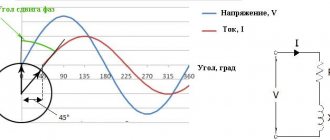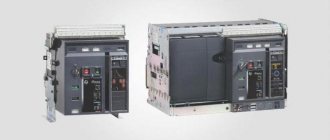Tasks of the PID controller in automated process control systems
The main task of the PID controller is to maintain a certain value of the technological process parameter at a given level. That is, in simple terms, the task of the PID controller is to take into account the received values from the sensors (feedback) to influence the control object, smoothly bringing the controlled value to the specified settings. The use of PID controllers is advisable, and often the only one possible, in processes where high accuracy of transient processes, continuous monitoring and regulation of specified parameters are required, and significant fluctuations in the system are unacceptable.
Three PID controller coefficients and operating principle
The work of the PID controller is to provide an output signal about the power required to maintain the controlled parameter at a given level. To calculate the indicator, a complex mathematical formula is used, which contains 3 coefficients - proportional, integral, differential.
Let us take as an object of regulation a container of water in which it is necessary to maintain the temperature at a given level by adjusting the degree of opening of the valve with steam.
The proportional component appears at the moment of mismatch with the input data. In simple words it sounds like this - the difference between the actual temperature and the desired one is taken, multiplied by an adjustable coefficient and an output signal is obtained that should be supplied to the valve. Those. As soon as the degrees drop, the heating process starts; if they rise above the desired level, a shutdown or even cooling occurs.
Next comes the integral component, which is designed to compensate for the influence of the environment or other disturbing influences on maintaining our temperature at a given level. Since there are always additional factors influencing the controlled devices, at the moment the data arrives to calculate the proportional component, the figure is already changing. And the greater the external influence, the stronger the fluctuations in the indicator. There are surges in supplied power.
Comparison of PID controller with position control
In automated process control systems, two types of controllers are most widespread: on-off and PID.
The two-position regulator is the easiest to use and widely used.
This type of controller compares the value of the input quantity with a given setpoint parameter. If the value of the measured value is below the set value, the controller turns on the actuator; if the set value is exceeded, the actuator turns off. To prevent the device from triggering too frequently, as a result of system oscillations and therefore changing values, the minimum and maximum response threshold is set - hysteresis, or otherwise dead zone, dead zone, differential. For example, we need to maintain a temperature of 15°C. If the hysteresis is set to 2°, then the controller will turn on the heating at 14°C and turn it off at 16°C.
The lower the hysteresis value, the more accurate the control process will be, but the operating frequency increases, which ultimately leads to wear of the switching devices. An increase in hysteresis will reduce the switching frequency, but at the same time the amplitude of oscillations of the controlled parameter increases, which will lead to a deterioration in the control accuracy.
One way or another, with this type of regulation, undamped oscillations occur, the frequency and amplitude of which depend on the parameters of the system. Therefore, this method provides good results in systems with inertia and low delay. In particular, this method is widely used in temperature control in heating furnaces.
Unlike an on-off controller, using a PID controller it is possible to reduce system oscillations to a minimum, due to the fact that with this control method various values of the system are taken into account - actual value, set value, difference, speed. This allows you to stabilize the system and achieve an increase in accuracy tens of times compared to the two-position method. Of course, a lot here depends on the correctly selected PID controller coefficients.
In order to correctly select the required type of regulator, it is necessary to at least approximately know the characteristics of the controlled object, the requirements for control accuracy, and the nature of the disturbances affecting the controlled object.
Setting up the PID controller. Ziegler-Nichols method.
In the previous article, we figured out the operating principle of the PID controller (link). Now, as promised, we will consider the basic methods for tuning and selecting its coefficients) In general, by and large, when using a PID controller, it is necessary to build a model of the entire system as a whole and mathematically calculate the required values of the coefficients. This is the right thing to do. But, of course, no one does that











